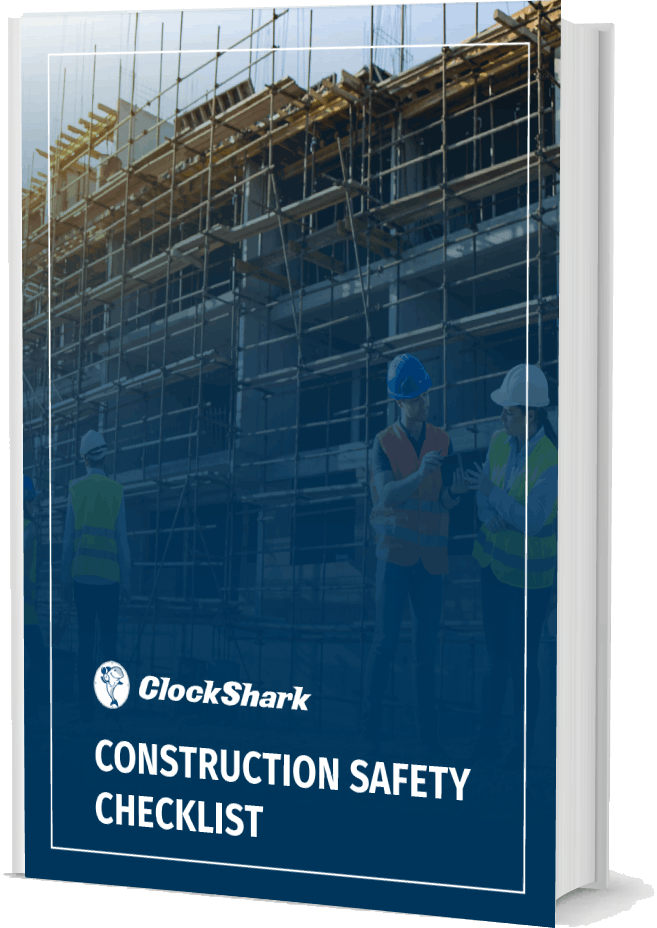Workplace safety in the U.S. has come a long way since the Occupational Safety and Health Administration (OSHA) was formed in 1970. Since then, workplace injuries have decreased by 80%, and workplace fatalities have been cut by almost two thirds.
But what exactly is OSHA, how does it work, and how can it affect your construction company? Read our article to find out.
What is OSHA?
OSHA is a government agency that was formed as a result of the Occupational Health and Safety (OSH) act of 1970.
The OSH act gives Americans the right to a safe workplace. And it requires most private sector businesses with at least one employee to comply with OSHA safety standards.
There are a few exceptions to this rule, but not many. So, all private sector construction businesses with at least one employee will either fall under the federal jurisdiction of OSHA or the jurisdiction of an OSHA approved state plan.
How Does OSHA Works
“There are two sides to OSHA,” says Sheldon Primus, authorized OSHA trainer and host of The Safety Consultant Podcast. “One is compliance assistance, and one is compliance enforcement.”
Compliance Assistance
Compliance assistance is the side of OSHA that assists businesses in complying with OSHA safety standards.
Here are several ways OSHA offers compliance assistance:
- They offer:
- No-cost, on-site safety and health consultations
- Co-op programs
- OSHA strategic partnerships (OSP) to develop training tools and resources to educate workers
- Free educational publications on their website, or you can call to order materials at 1-800-321- OSHA (6742)
- A free newsletter called Quick Takes that provides bi-monthly training and education as well as news
- They partner with education centers to develop courses and training on OSHA standards
- They can help you create a safety and health program
- They can introduce you to a compliance assistance specialist
OSHA provides these resources (many of them free) to help businesses stay in compliance.
Compliance Enforcement
Compliance enforcement is when OSHA issues citations and/or penalties for safety violations. The severity of the citation and the amount of the penalty varies by offense.
“Not all infractions are the same,” says Primus. “OSHA will have a penalty structure based on the type of infraction.”
Here are the six types of infractions according to OSHA:
- Serious: Serious hazards that can result in injury or death if not corrected
- Other than serious: Violations that won’t result in injury or death but still pose a risk to employee health
- Posting requirements: Failure to post signs near the site of any cited work hazard will result in a penalty
- Failure to abate: When a violation isn’t resolved within the timeframe that OSHA gives to correct it
- Willful or repeated: Any cited violations that have been repeated within three years
- De minimis violation: Minor infractions that sometimes only merit a verbal warning
The first four infractions carry a maximum penalty of $13,653 per violation as of the posting date of this article. But they won’t carry the maximum fine every time. There’s a formula for calculating penalties. And it revolves around the gravity, or seriousness, of each situation.
“It’s a probability scale and a severity scale,” says Primus. “If framers are doing something hazardous, and there’s a high likelihood that they're going to have an accident—and, if [that accident] happens someone's going to get seriously hurt—the probability scale is high and the severity scale is high. They’re going to get [fined] every bit of that $13,000.”
“But if it’s like, ‘Yeah, they should have done this, but no one got hurt,’ if they forgot to do paperwork or something like that, then they could get away with a $1,000 fine,” says Primus.
The highest monetary penalties are reserved for willful and repeat violations, with fines of up to $136,532 per repeat incident.
De minimis violations carry the least weight and carry no fines or very small ones. For example, having a ladder with 12 inches between rungs instead of 13, may only result in a verbal reprimand.
But, of course, in order to cite any of these violations, OSHA has to do an inspection first.
What Prompts an OSHA Inspection?
40% of OSHA inspections are pre planned. OSHA calls these programmed inspections.
In programmed construction inspections, OSHA randomly chooses several jobsites in one area to inspect. And they have a list of sites they inspect every month. If your site is chosen, it will be inspected.
Any construction inspections that fall outside of OSHA’s routine lists are called unprogrammed inspections. They’re usually the result of reports from outside sources.
Here are the four types of unprogrammed inspections, listed from highest to lowest priority:
Imminent danger: If an OSHA inspector were to drive by your site and see someone in a life-threatening situation, they could inspect your site immediately. They could advise the person in danger to stop work, and possibly get a court order to stop all work on site.
Fatalities or severe injuries: If a worker is injured or killed on the job, you must report it to OSHA. When this happens, an inspection usually follows.
Employee complaints: If a worker reports unsafe working conditions, OSHA will inspect the complaint.
Referrals: Another type of inspector, like an electrical or fire inspector, can report construction safety violations on your jobsite. This is called a referral and often leads to an inspection.
Conclusion
OSHA compliance can be complicated. But it’s important. Being OSHA compliant can keep your employees safe and keep your company from getting fined.
If you find OSHA compliance overwhelming, reach out to OSHA for help. They provide free on-site consultations. Or, they can refer you to a trusted advisor.
“I would tell any business owner [that using] a safety and health officer or consultant, even once in a while, is going to help you stay ahead of the game,” says Primus.






